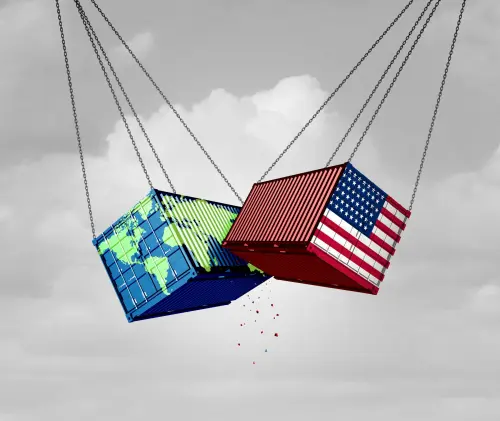This article originally appeared in the Wall Street Journal on May 18, 2017.
Protectionists like to cite the U.S. trade deficit—last year imports of goods and services exceeded exports by $501 billion—as evidence that unfair trade agreements have hurt American competitiveness. But a new working paper from the Bureau of Economic Analysis, published in March, challenges this narrative: Turns out, America’s trade deficit isn’t nearly as large as the official figures suggest.
To illustrate this finding, the economists Fatih Guvenen, Raymond Mataloni, Dylan Rassier and Kim Ruhl examine the iPhone. The device is said to be “Designed by Apple in California. Assembled in China.” Yet to lower its tax bill, Apple reports that its iPhone profits were earned in neither place, but were instead accrued in some other country.
Turns out, America’s trade deficit isn’t nearly as large as the official figures suggest.
Assume an iPhone is assembled in China for $250 and sells in Europe and the U.S. for $750. Apple’s profit is $500. Often that economic value gets attributed to an Apple subsidiary set up in a low-tax nation like Ireland or Luxembourg.
If most iPhone development is actually done in California, most of the $500 represents American production and should be included in U.S. gross domestic product. Then, when an iPhone is sold in Europe, that value should count as an export from the U.S. When a phone is instead sold in the U.S., the net amount of the import should only be the $250 cost of manufacturing in Asia, since the rest is produced by Californians.
With this in mind, the study’s authors estimate how much American trade is mismeasured. Although the official trade deficit in 2012 was $537 billion, they conclude that U.S. exports were undercounted and imports overstated by a combined $280 billion. With this adjustment, the real trade deficit that year shrinks to $257 billion—or about 1.6% of GDP. Trade still isn’t balanced, but the deficit appears to be less than half the size everyone thought.
In other words, more than half the goods and services that were counted in the U.S. trade deficit actually were produced right here in America. This makes it harder to argue that an outsize trade deficit is responsible for American manufacturing’s woes. It’s true that traditional blue-collar workers have had trouble competing globally. But high-skilled American workers and the companies that employ them have been competing just fine.
The redistribution of income away from high school grads is certainly one of the most difficult challenges that the U.S. economy faces. But as this new evidence makes clear, the source of the problem isn’t the trade deficit.
The Brookings Institution is committed to quality, independence, and impact.
We are supported by a diverse array of funders. In line with our values and policies, each Brookings publication represents the sole views of its author(s).





Commentary
The true trade deficit
February 6, 2018